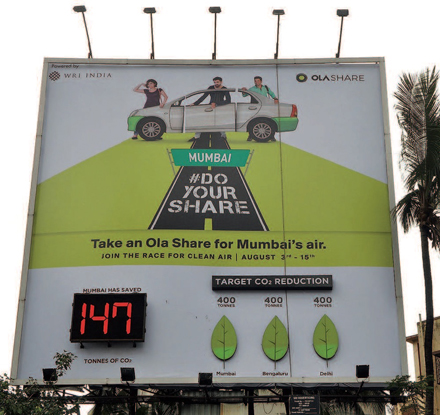|
In addition to acquiring Otto, a startup introducing self-driving technology on existing trucks, Uber teamed up with Volvo Car Corporation to create autonomous ride-hailing vehicles. Volvo and Uber engineers will collaborate on vehicle development, and Uber will add its self-developed autonomous driving systems to the Volvo base vehicle. The base vehicle will be developed on Volvo’s modular scalable product architecture (SPA). The project will enhance to the scalability of the SPA platform to include the safety, redundancy, and new features required for autonomous vehicles to be permitted on the road.
Ola aims to make commuting more affordable for passengers by letting them share rides with other passengers. Furthermore, Ola, which is Uber’s biggest competitor in India, came up with a competition among its users to motivate reduced CO2 emissions. By installing billboards at some prominent junctions, three cities displayed their carbon emissions saved by shared rides. Ola Share users in Delhi, Mumbai, and Bengaluru competed against each other to be the first city to reduce more than 400 tons of CO2 emissions between 3 and 15 August 2016.

The Advanced Autonomous Waterborne Applications Initiative (AAWA), led by Rolls-Royce, has published a white paper outlining how remote and autonomous shipping will become a reality. The white paper explores current research regarding the business aspects of autonomous applications, the safety and security implications of designing and remotely operating autonomous ships, the legal and regulatory dimensions, and the existence and readiness of a supplier network to deliver commercially applicable products in the short to medium term. The white paper concludes that the necessary technologies already exist. The AAWA project is testing sensor arrays in a range of operating and climate conditions in Finland and has created a simulated autonomous ship control system that allows the complete communication system to be explored.
Full article: IEEE Vehicular Technology Magazine, Volume 11 Number 4, December 2016 |